The most memorable interiors do more than look good; they make you feel alive. When a room wraps you in warm light, fills your ears with calming sounds, perfumes the air with subtle botanical notes and invites your hand to explore rich textures, it taps into humanity’s innate connection to nature. This connection, known as biophilia, inspires natural interior design, an approach that goes far beyond potted plants and rustic wood. In this article I will explain why engaging in every sense leads to healthier, happier spaces and how you can bring these principles into your own home or workplace.
Why biophilic design must be multisensory
When we speak about biophilic design we often picture greenery and organic shapes; however, true biophilia is multisensory. Outside, our bodies respond to sunlight, rustling leaves, birdsong, the scent of damp soil and the feel of bark. Scientific research shows that engaging multiple senses amplifies the benefits of nature exposure: cognitive performance improves, stress hormones drop and people feel more content. In other words, if your space only looks good it is not finished. To design holistically we must consider light, sound, smell, touch and even temperature.
Natural light: the mood‑maker
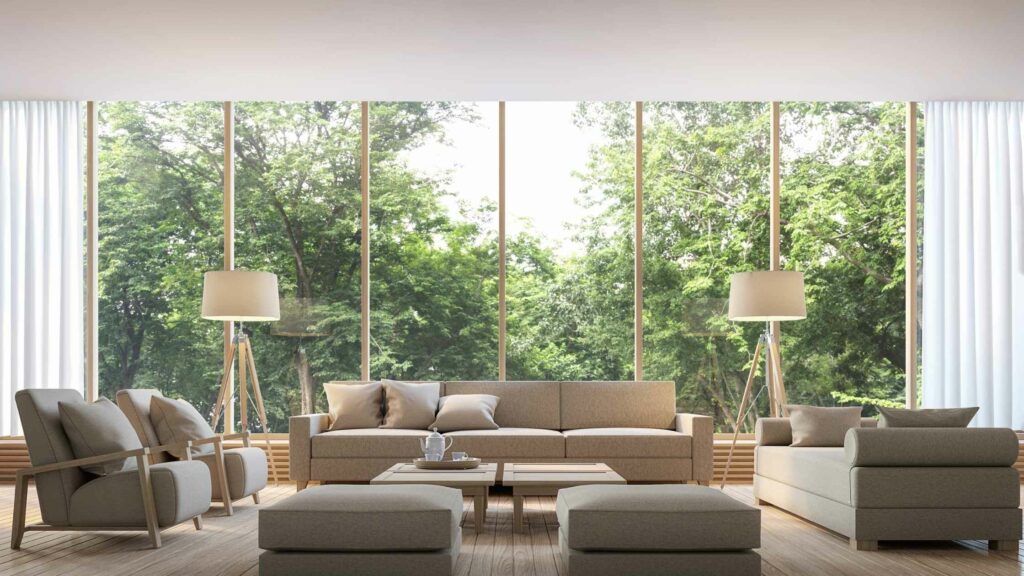
Daylight does more than reveal colours; it orchestrates our internal clocks and influences mood. A few years ago a survey of 1,600 office workers across North America found that access to daylight and views was the number one workplace perk, outranking gyms and free food. Over one third of respondents reported limited or no natural light at their desks, and half agreed that such deprivation harmed their mood, productivity and sleep. In a controlled study comparing windowed and windowless offices, researchers observed higher stress hormones, disrupted melatonin and poorer sleep in workers without windows. A separate analysis of 500,000 British adults revealed that each extra hour spent outdoors in daylight was linked to a lower risk of depression and greater happiness, independent of socioeconomic factors.
Designers can maximise daylight by selecting large windows, skylights and open layouts that allow sunlight to penetrate deep into interiors. Light coloured walls and reflective surfaces help bounce light around a room, while translucent curtains diffuse harsh rays. Even in spaces where structural changes are impossible, full‑spectrum desk lamps that mimic the sun’s colour temperature support circadian rhythms. Daily habits also matter: take breaks outside and position workstations near windows to soak up natural light.
For a deeper understanding of daylight’s benefits, explore the UCLA Health article on natural light and mood, which summarises multiple studies and personal experiences of office workers.
Soundscapes: the quiet power of water and birds

Our ears are always on alert, scanning for cues of danger or safety. In urban interiors this can mean constant mechanical hums and voices, which keep the sympathetic nervous system activated. Nature sounds have the opposite effect. A 2021 meta‑analysis of studies on natural soundscapes found that exposure to sounds such as water and birds improves health outcomes, increases positive emotions and reduces stress and annoyance. The researchers noted that water sounds produced the largest improvement in health and positive affect, while birdsong produced the greatest reduction in stress and annoyance. In other words, hearing a gentle stream or birds chirping tells our body that the environment is safe and resources are plentiful.
Laboratory experiments support these findings. After participants completed a stressful mental arithmetic task, those who listened to nature sounds recovered faster—measured by lower skin conductance and heart rate variability—than those exposed to urban noise. Another study compared high‑resolution recordings of a murmuring brook with city traffic; listening to the brook decreased oxyhemoglobin in the prefrontal cortex, lowered heart rate and increased parasympathetic nervous activity, indicating deep relaxation.
How can you create a calming soundscape? Water features like fountains and waterfalls add movement and moisture while producing soothing sounds. In spaces where water installation is impractical, speakers playing curated recordings of streams, rain or birdsong can subtly transform the atmosphere. Incorporate soft furnishings, rugs and acoustic panels to absorb harsh frequencies and reduce echo. Consider quiet zones away from HVAC equipment or busy streets. For more detail on the science behind natural soundscapes, read the meta‑analysis on natural sounds and health.
Smell: aromas that sharpen focus and soothe stress
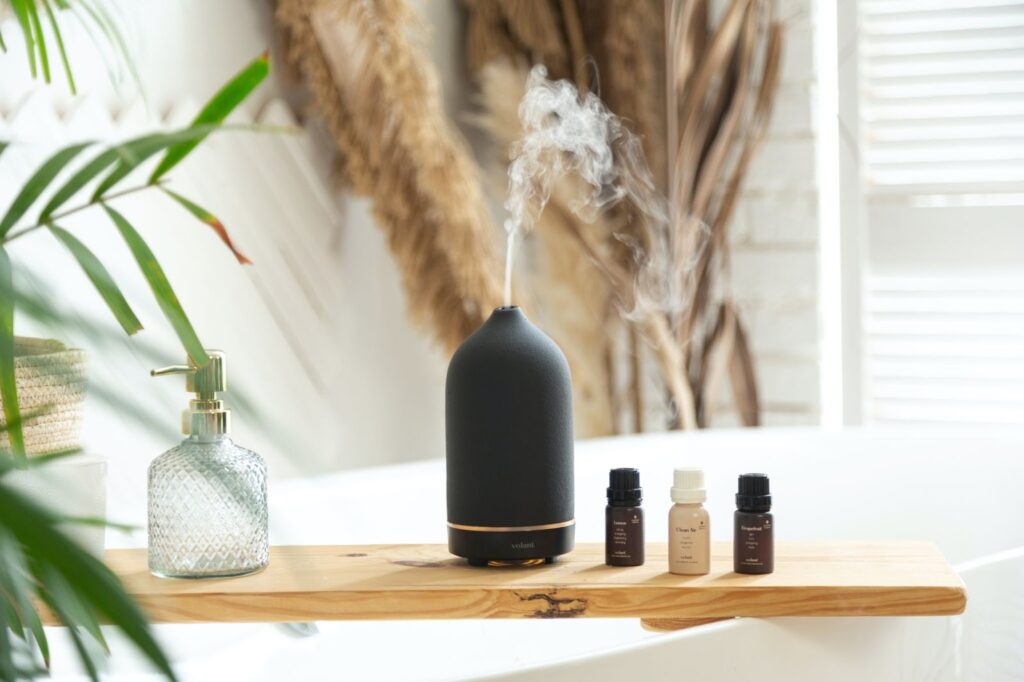
Scents travel directly to the limbic system, the part of the brain associated with emotion and memory, so they can affect cognition and mood almost instantly. While synthetic fragrances may overwhelm, natural aromas from plants and wood offer subtle yet powerful effects.
Rosemary and cognition
A controlled study at Northumbria University examined how exposure to rosemary and lavender aromas influenced performance on memory and attention tasks. Volunteers sat in cubicles infused with either rosemary, lavender or no scent. Those exposed to rosemary performed better on serial subtraction and visual information processing tasks, while lavender impaired performance. Further analysis showed that the concentration of 1,8‑cineole, a major component of rosemary oil, in participants’ blood correlated with faster and more accurate test scores. These results suggest that inhaling certain plant compounds can enhance cognitive function by modulating neurotransmitters such as acetylcholine.
To learn more about the pharmacological pathways involved, see the rosemary aroma study.
Hinoki cypress and physiological relaxation
Tree‑derived scents also induce relaxation. Researchers from Chiba University exposed participants to the aroma of Hinoki (Japanese cypress) leaf oil and measured brain activity and heart rate variability. A 90‑second exposure significantly decreased oxyhemoglobin in the right prefrontal cortex and increased the high‑frequency component of heart rate variability, an indicator of parasympathetic nervous activity, by 34.5%. Participants reported feeling more comfortable and natural during the scented exposure than during a control condition. These findings indicate that natural wood scents can calm the mind and body.
Find the full study, including details on participant responses, at the Hinoki cypress research page.
Wood walls that enhance performance
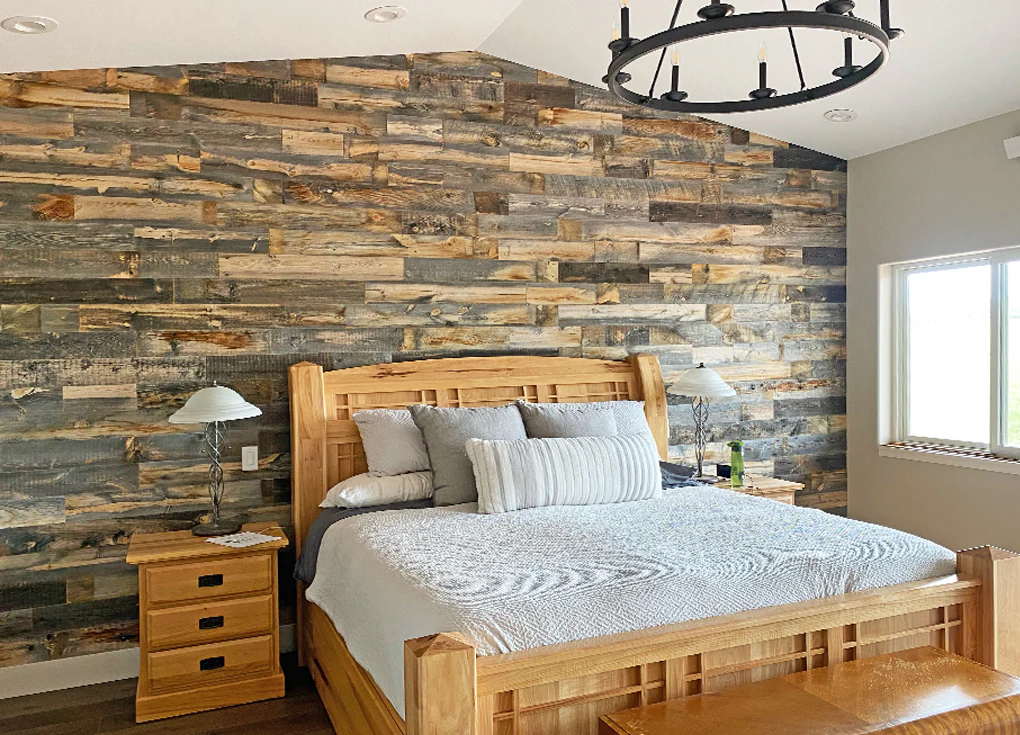
A 2025 pilot study looked at how volatile organic compounds (VOCs) emitted by interior walls made of Kagawa hinoki timber affect relaxation and work performance. Participants sat in a room lined with this fragrant wood and completed arithmetic tasks. Compared to a control room with cloth walls, the hinoki room increased parasympathetic activity during breaks and significantly improved calculation speed. The study concluded that cypress scents can both relax and stimulate, helping people work more efficiently. You can read the full pilot study at Journal of Wood Science.
Designing with scent
To introduce beneficial aromas in your space, grow herbs like rosemary, mint and basil on windowsills; crush their leaves when you need a mental boost. Use essential oil diffusers thoughtfully, rosemary or citrus oils for focus and cedarwood or Hinoki for relaxation. Consider finishing walls, floors or furniture with aromatic woods such as cedar, pine or cypress; these materials release phytoncides, natural compounds that continue to permeate the air over time. Good ventilation ensures scents remain fresh rather than overwhelming.
Touch: texture, warmth and depth
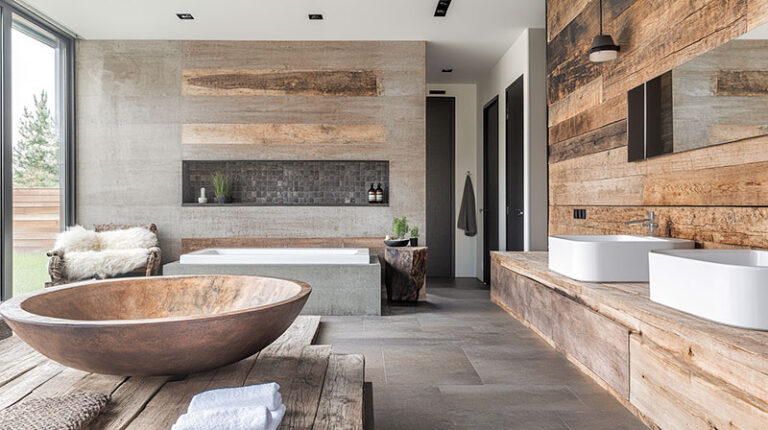
The way surfaces feel under our hands or feet influences how we perceive a space. Texture brings warmth, depth and character; smooth materials can feel cool and impersonal, while rough or soft textures invite connection.
Understanding tactile and visual texture
Designers distinguish between tactile texture, surfaces you physically touch, and visual texture—patterns or finishes your eyes perceive. Tactile texture adds warmth and comfort through materials like velvet sofas, rough stone walls or knitted throws. Visual texture adds depth and dimension via patterns, intricate paint finishes or wallpaper. Both types work together to make an interior feel layered and complete.
Layering natural materials
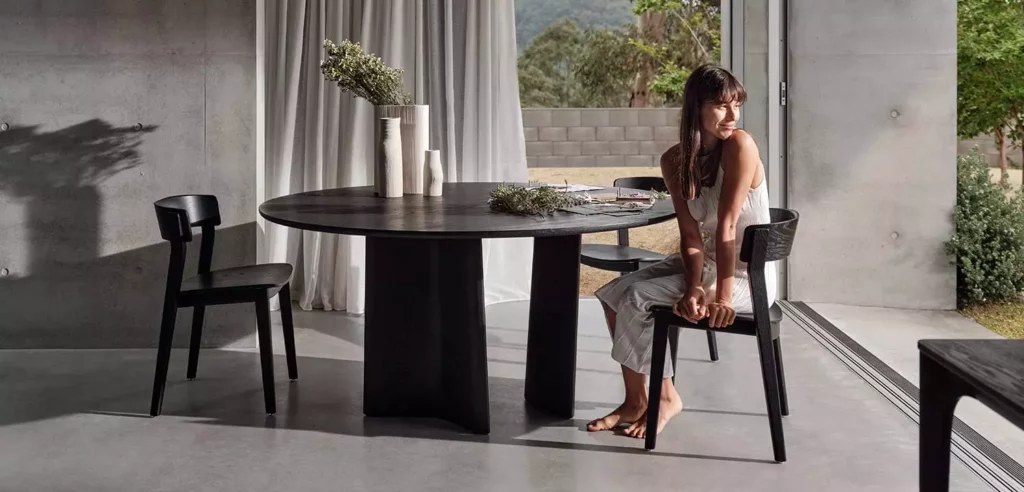
To build a rich tactile landscape, mix smooth and rough textures: pair a glossy coffee table with a woven rug, or set polished stone beside unfinished timber. Soft fabrics, velvet cushions, wool blankets, linen curtains, instantly warm a room. Natural materials like wood, stone and rattan introduce earthy textures that ground the design. Even small accessories such as wicker baskets or ceramic vases contribute to a varied tactile palette.
Texture can also influence how we perceive size. A virtual reality study on wall textures discovered that in small rooms, objective properties like hardness, reflectivity and texture depth significantly affect perceived spaciousness. In larger rooms, subjective qualities, how much the texture feels connected to nature, become more important. This finding suggests that choosing natural textures thoughtfully can make compact spaces feel more open.
For inspiration on mixing textures and natural materials, read the Decorilla guide to texture in interior design.
Designing multi‑sensory spaces: practical strategies
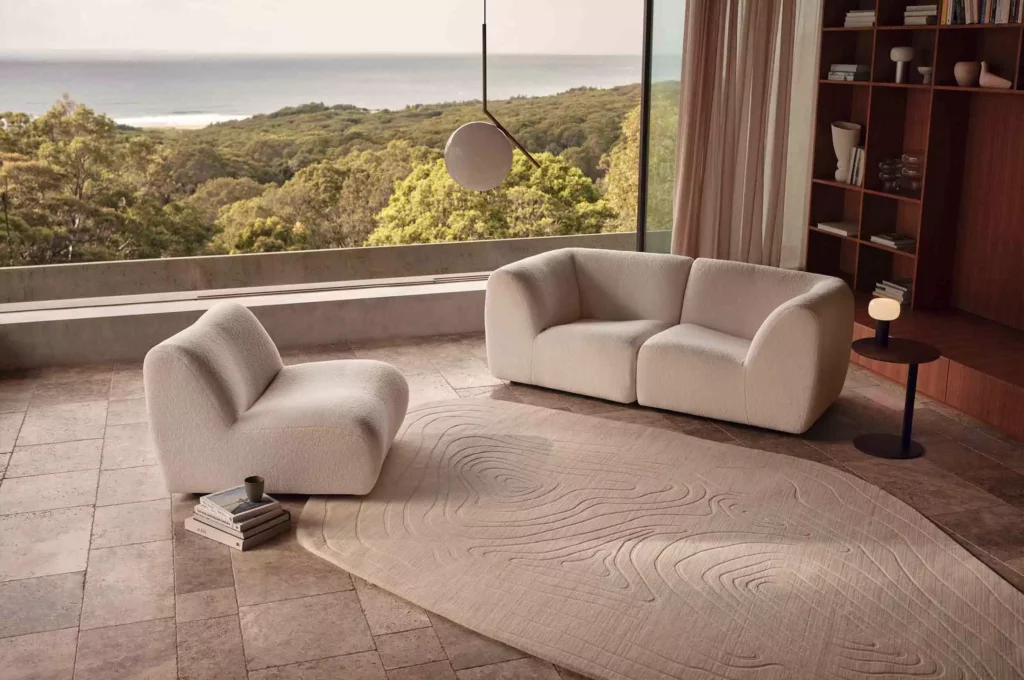
Creating a multisensory interior does not require a complete renovation. Layering small interventions yields cumulative benefits. Here are strategies to engage each sense:
- Maximise daylight: use large windows, skylights and light colours; position seating near windows; take outdoor breaks; when natural light is scarce, install full‑spectrum LEDs.
- Curate the soundscape: incorporate fountains, water walls or speakers playing gentle streams and birdsong; soften echoes with rugs and drapes; create quiet zones away from mechanical noise.
- Introduce natural aromas: grow aromatic herbs indoors; use diffusers with essential oils; choose furniture made from aromatic woods such as cedar or cypress; ventilate regularly.
- Layer textures: combine fabrics and finishes with varying tactile qualities; expose natural materials like wood and stone; include woven baskets, plants and handmade ceramics for additional texture.
- Consider thermal comfort: select breathable textiles like cotton and wool; encourage gentle airflow through operable windows or ceiling fans; ensure proper humidity levels.
- Bring life indoors: plants add colour, improve air quality and contribute subtle scents. Choose species with interesting foliage textures and natural fragrances.
Overcoming real‑world constraints
Not every space offers abundant windows or generous budgets. The key is to combine small interventions. A desk lamp with a full‑spectrum bulb, a tabletop fountain, a pot of rosemary and a soft wool throw engage sight, sound, smell and touch without altering the architecture. Renters can add plug‑in water features, portable diffusers and modular wooden panels to personalise their homes. In offices, employees often lack control over the environment, so advocating for daylight, better acoustics and indoor plants can lead to healthier, more productive teams. Even scheduling walking meetings outdoors during daylight hours supports mood and focus.
Design that feels alive
It is easy to focus solely on aesthetics, but lasting comfort comes from engaging every sense. Research shows that natural light regulates our circadian rhythms and lifts our mood; water sounds and birdsong reduce stress; scents from herbs and trees sharpen focus and induce relaxation; and tactile textures bring warmth and depth. By layering these elements thoughtfully, we create environments that nourish body and mind. In an era when most people spend more than ninety percent of their time indoors, such spaces are not a luxury but a necessity. Multisensory biophilic design transforms interiors from mere shelters into living systems that support wellbeing. When your space engages all your senses, it is not just finished, it is alive.
FAQ: Frequently asked questions and answers about natural interior design and biophilic spaces
What is natural interior design?
Natural interior design integrates natural elements, such as light, plants, textures and scents, into built spaces to create a holistic environment that supports human well‑being; it goes beyond aesthetics and seeks to make indoor settings feel alive and connected to nature.
How does biophilic design support mental health?
By aligning with our innate preference for natural settings, biophilic design reduces stress and anxiety; exposure to daylight, greenery and natural sounds has been shown to improve mood, cognitive function and overall emotional well‑being.
Why is natural light so important in interior design?
Daylight regulates our circadian rhythms, which control sleep patterns and hormone production; studies show that people with access to natural light at work report better sleep, higher productivity and a more positive mood than those in artificially lit environments.
What are simple ways to bring nature sounds indoors?
You can add tabletop fountains or wall-mounted water features to introduce the gentle sound of flowing water; alternatively, curated recordings of birdsong or forest ambience played through hidden speakers can create a calming soundscape without altering the structure.
How do scents influence the atmosphere of a room?
Scent is directly linked to the brain’s emotional and memory centers, so natural aromas can affect mood and focus; for example, rosemary is associated with improved concentration, while cedarwood and hinoki cypress promote relaxation.
Which plants work best for a multisensory interior?
Choose plants that appeal to multiple senses: herbs like basil, mint and rosemary provide fragrance and foliage you can touch; larger plants such as fiddle leaf figs or rubber plants contribute lush textures and help purify the air; flowering varieties like jasmine add a subtle scent and visual interest.
How do textures shape our perception of space?
Mixing textures, such as pairing smooth stone with rough wood or soft textiles, adds depth and warmth; research shows that in small rooms, the hardness and reflectivity of wall textures can make the space feel larger, while in bigger rooms, natural textures create a sense of comfort and connection.
Can I apply biophilic principles in a small apartment?
Yes, even limited spaces can benefit from natural elements; use light-filtering curtains to maximise daylight, bring in potted herbs or small trees, play nature sounds at low volume and incorporate natural materials like woven baskets, wooden furniture and linen textiles.



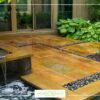




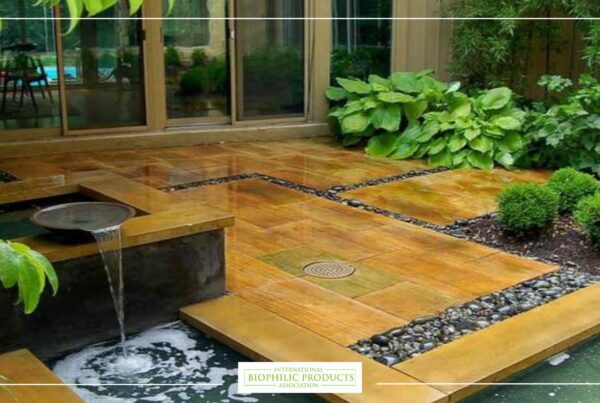
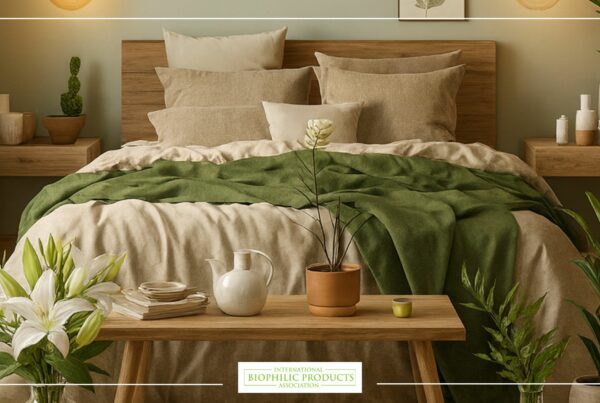

12 Comments